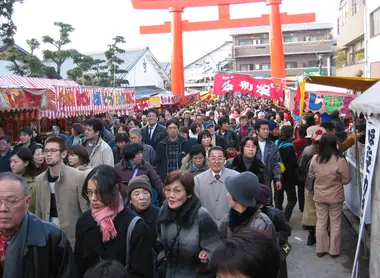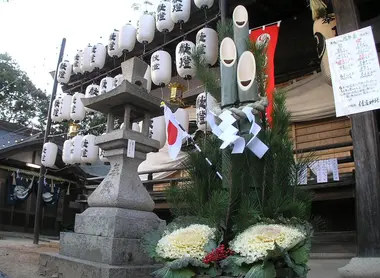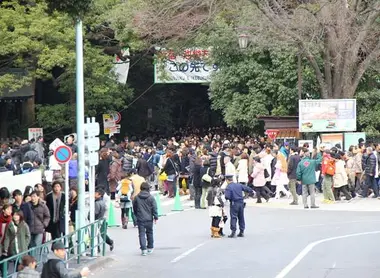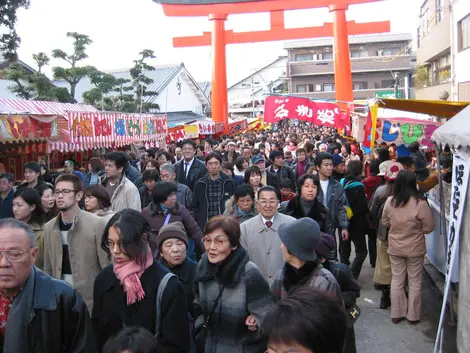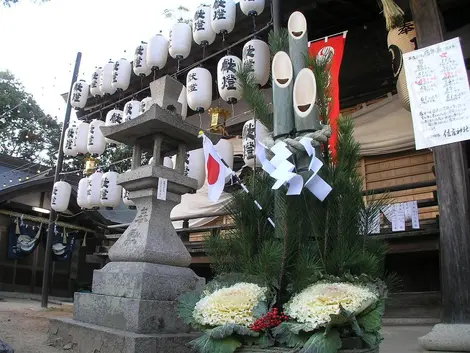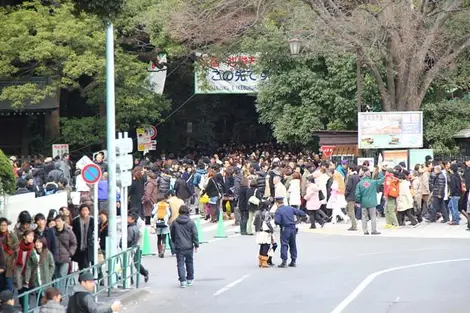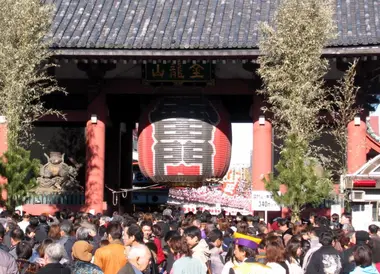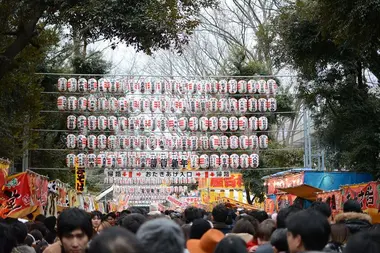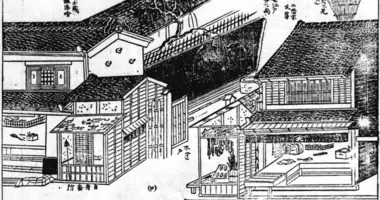Hatsumode, la tradición japonesa del Año Nuevo
- Publicado el : 17/01/2024
- Por : J.L.
- Youtube
El hatsumode (初詣) es la primera visita del año a un templo budista o santuario sintoísta. Esta tradición antigua y muy popular en Japón tiene lugar principalmente durante los 3 primeros días de enero. Los japoneses acuden con familiares y amigos a lugares sagrados para rezar, hacer ofrendas y comprar amuletos de la buena suerte, en un ambiente festivo y cálido a pesar del frío invernal.
Orígenes y desarrollo de la tradición hatsumode
El hatsumode tiene sus orígenes en el periodo Edo (1603-1868). En aquella época, los japoneses solían acudir el primer día del año a un santuario situado en la dirección que se consideraba que traía buena suerte según la astrología china. Esta costumbre, conocida como ehomairi, continuó hasta el final de la era Meiji (1868-1912). Con el desarrollo del transporte, la gente empezó entonces a visitar los templos y santuarios más famosos, independientemente de su ubicación. En la década de 1950, el periodo hatsumode se amplió al día y a la noche, hasta medianoche, para adaptarse a los nuevos estilos de vida.
¿Dónde practicar el hatsumode? Templos y santuarios de visita obligada
Los santuarios y templos más populares de Japón atraen a millones de visitantes durante el hatsumode. Entre los más populares están el santuario Meiji-Jingu de Tokio, que recibe a más de 3 millones de personas, el templo Fushimi-Inari de Kioto y sus miles de torii bermellón (2,7 millones de visitantes), el santuario Narita-San cerca del aeropuerto de Tokio (3 millones) y el templo Sensô-Ji de Asakusa, en el corazón de la capital (2,8 millones). El famoso santuario de Kanda-Myojin, en Tokio, ¡incluso ofrece sake a los visitantes para calentar el ambiente!
Qué hacer durante el hatsumode Actividades y rituales
Tras purificarse las manos y la boca en la fuente temizu, los visitantes acuden a rezar ante el edificio principal del templo o santuario. Hacen una ofrenda de plata (saisen) en la caja de madera y luego tiran de una gran cuerda para hacer sonar la campana. A continuación, debes inclinarte dos veces, aplaudir dos veces, rezar una oración silenciosa e inclinarte una última vez. A continuación, puedes comprar diversos amuletos de la suerte: omikuji (predicciones), omamori (amuletos), hamaya (flechas) y ema (placas de madera). Los niños también suelen recibir un sobre con dinero. En los pasillos, hay muchos puestos que ofrecen tentempiés: oden, yakisoba, takoyaki, carnes a la parrilla... ¡El ambiente es festivo!
¿Cómo rezar y comportarse en un templo o santuario durante el hatsumode?
En un santuario sintoísta, hay que respetar el orden de los pasos: inclinarse antes de cruzar el torii, lavarse las manos y la boca en el temizuya, echar una moneda en la caja, agitar la campana si la hay, inclinarse dos veces, aplaudir dos veces, rezar e inclinarse una última vez. En un templo budista no es necesario aplaudir. Sin embargo, puedes quemar incienso para purificarte antes de la oración. Como norma general, debes procurar no caminar por el centro de los pasillos, sino por los lados, y ser silencioso y respetuoso.
Omikuji, ofuda y omamori: talismanes y predicciones de Año Nuevo
Los japoneses son muy aficionados a los omikuji, tiras de papel que predicen la fortuna en el amor, el trabajo, la salud, etcétera. Se sacan al azar de una caja, a veces con palillos numerados. Si la predicción es errónea, se cuelgan en una estructura metálica o en un árbol para alejar la suerte. Los omamori son pequeños amuletos protectores que se cuelgan en el bolso. Los hay para todos los deseos: éxito escolar, salud, amor, parto, conducción, etc. Por último, los ofuda son largas placas de madera que se pueden exponer en casa para proteger el hogar.
Ambiente y especialidades culinarias durante el hatsumode
El hatsumode es una oportunidad para degustar platos especiales de Año Nuevo. Entre ellos están el ozoni, un caldo con verduras y mochi (pastel de arroz), el osechi ryori, un surtido de platos tradicionales en latas lacadas, y el toso, un sake medicinal que se cree que promueve la buena salud. Numerosos puestos instalados cerca de los templos también venden tentempiés dulces y salados para satisfacer hasta los apetitos más hambrientos. A los niños les encantan las manzanas de caramelo y otros dulces de colores. Todo forma parte de un ambiente alegre, arrullado por el tintineo de las campanas y el bullicio de las familias que han acudido en gran número a compartir este momento de fervor y convivencia, a pesar del frío de principios de año.
